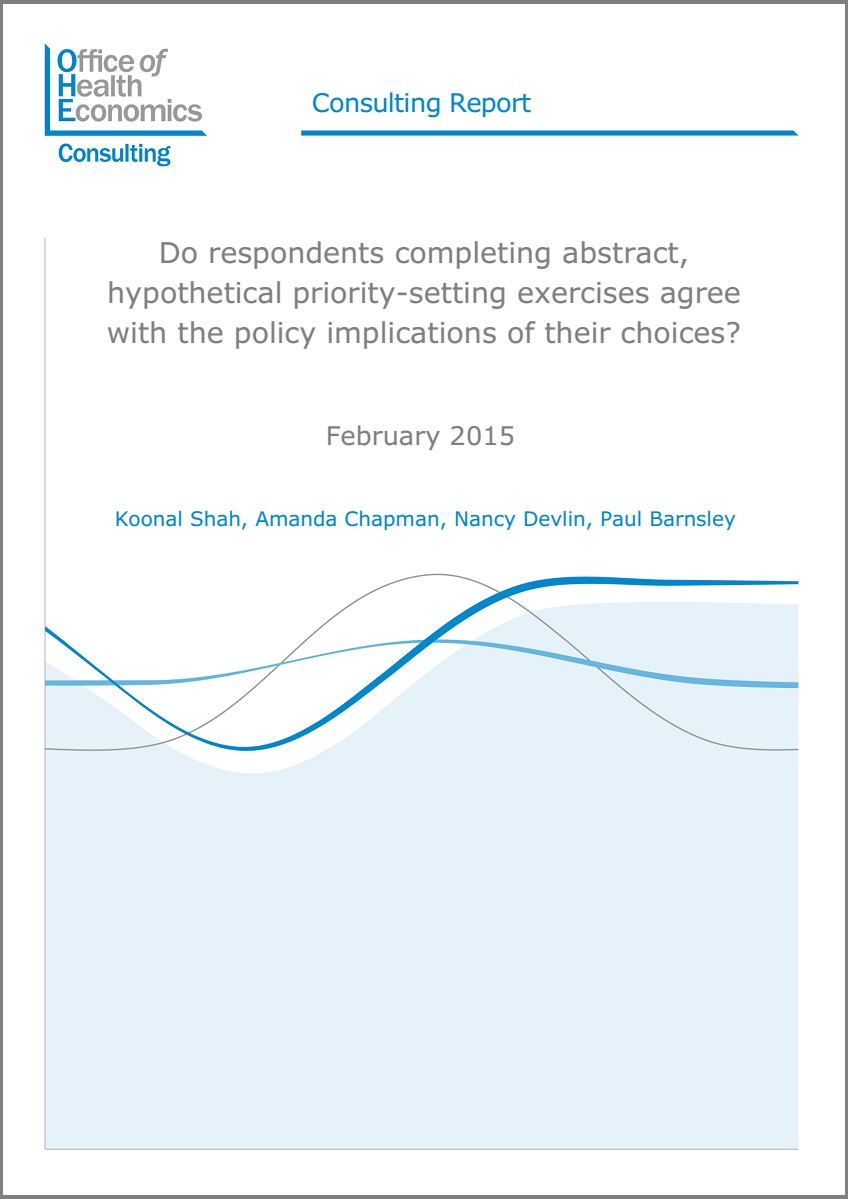Do Respondents Completing Abstract, Hypothetical Priority-setting Exercises Agree With the Policy Implications of Their Choices?
Stated preference studies are increasingly being used to understand people’s views about the relative importance of different criteria for making health care priority setting decisions.
Stated preference studies are increasingly being used to understand people’s views about the relative importance of different criteria for making health care priority setting decisions.
Stated preference studies are increasingly being used to understand people’s views about the relative importance of different criteria for making health care priority setting decisions. Such studies typically involve presenting survey respondents with priority setting scenarios involving hypothetical patients and medical conditions. In order to minimise bias, researchers usually present the scenarios in an abstract manner and provide limited descriptive information. This has led to concerns that the answers given by respondents do not reflect those that they might have given had they been better informed about the nature of the hypothetical medical conditions and the patients affected by them.
A further concern associated with public preference studies is that it is unclear whether the respondents would agree with the policy implications of their responses to the abstract choice tasks. The extent to which respondents in social preference studies agree with researchers’ interpretations of their responses has received only limited attention in the health economics literature to date.
This study examines the impact of alternative presentations of hypothetical priority setting scenarios, and the extent to which the study respondents agree with the policy implications of their responses to stated preference tasks. A survey was designed to elicit data on people’s preferences regarding health care priority setting. The questions formed the basis for two focus group discussions and a self-completion Internet survey.
The results show that people’s stated preferences regarding hypothetical scenarios are influenced by the way in which the information is presented to them. They also show that people do not always agree with the policy implications of their responses to the stated preference tasks.


